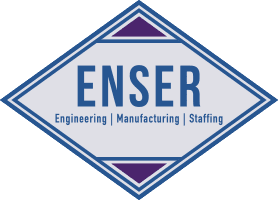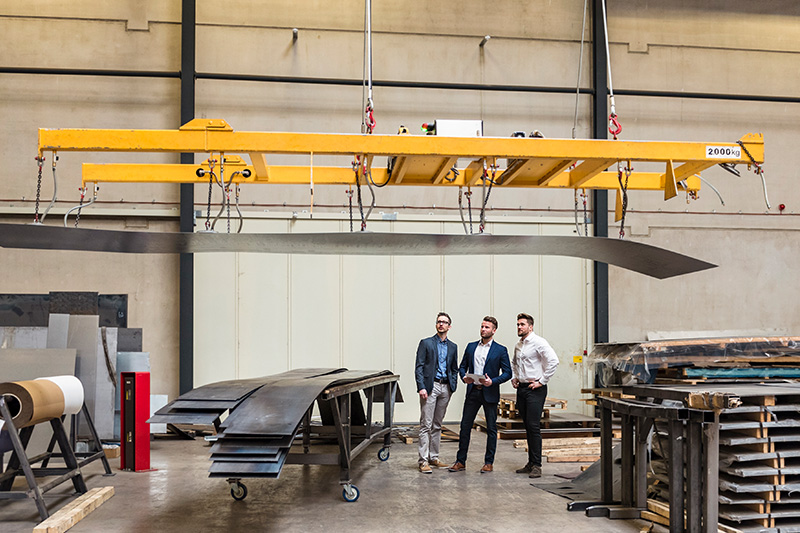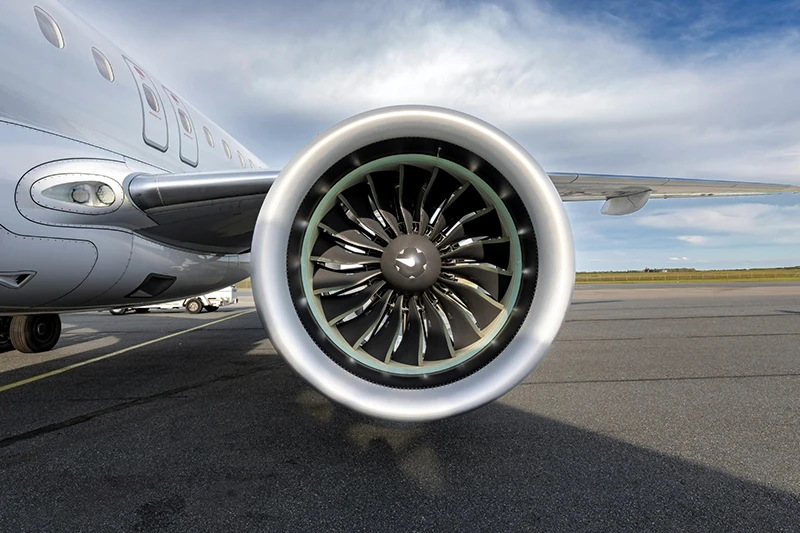When it comes to material handling and industrial manufacturing, below-the-hook lifting devices like lifting beams and spreader bars play pivotal roles in ensuring the safety, efficiency, and effectiveness of lifting operations. As a key provider of custom engineering solutions, including tooling, fixtures, below-the-hook lifting devices, finite element analysis (FEA) and engineering staffing, we understand the importance of selecting the right equipment for specific tasks. This blog post provides a comparative analysis of lifting beams and spreader bars, aimed at enriching our readers' knowledge and assisting in the selection process for their unique lifting needs.
Lifting Beams
Lifting beams are rigid structural elements designed to handle loads by specifically locating the lifting points, thereby controlling bending moments and other forces during lifting operations. They are characterized by a central lifting lug that connects to the crane, hoist, or other lifting systems, with multiple attachment points underneath to secure to the load. This general concept makes lifting beams ideal for scenarios where headroom is limited or when lifting unevenly distributed loads.Advantages of Lifting Beams
- Versatility: Can be designed with adjustable lifting points for handling loads of various sizes and shapes.
- Low Headroom: Optimal for operations where overhead space is limited.
- Load Stability: Provides better control over the load, reducing the risk of load center shifting or tilting.
Limitations of Lifting Beams
- Weight Capacity: Generally lower than spreader bars due to the bending moments exerted on the beam.
- Design Complexity: Usually require custom engineering to match specific lifting requirements.
Spreader Bars
Spreader bars consist of a long bar that distributes the load across two or more points, effectively increasing the stability of the lift by keeping sling angles small. They are used in tandem with slings that connect the load to the spreader bar typically in vertical orientation. So as to limit bending to the live load system. The bar is then lifted from a central point. Spreader bars excel in lifting large, bulky, or long loads where maintaining balance and preventing damage is critical.Advantages of Spreader Bars
- High Load Capacity: Ideal for heavy and large loads due to their ability to distribute weight effectively.
- Improved Stability: Minimizes the risk of load tipping and damage by maintaining a consistent sling angle.
- Adaptability: Can be used with various sling types, including wire rope, chain, and synthetic materials.
Limitations of Spreader Bars
- Headroom Requirement: Requires more vertical space compared to lifting beams, which may not be suitable for all environments.
- Transportation and Storage: Due to their length, spreader bars can be more challenging to transport and store.
Choosing the Right Below the Hook Lifting Device
The choice between a lifting beam and a spreader bar depends on several factors, including the nature of the load, available headroom, and specific lifting requirements. For loads requiring minimal headroom and high maneuverability, lifting beams are often the preferred choice. Conversely, for large, heavy, or awkwardly shaped loads that demand enhanced stability and even weight distribution, spreader bars are more suitable.Understanding the differences and applications of lifting beams and spreader bars is crucial for ensuring the safety and efficiency of lifting operations. As leaders in engineering and manufacturing solutions, ENSER Corp is committed to providing innovative solutions with below-the-hook lifting that meet our clients' specific needs. Whether it's a custom lifting beam or a spreader bar, our team is dedicated to delivering high-quality, reliable, and safe lifting solutions.
For additional below the hook lifting devices, check out our comprehensive guide Choosing the Right Below the Hook Lifting Equipment: A Comprehensive Guide.
For a more thorough understanding of the American Society of Mechanical Engineers (ASME) requirements for below the hook lifting devices, consider reading our post Understanding Requirements for Below-the-Hook-Lifting Fixtures: An Introduction to ASME B30.20
Why Choose ENSER for Your Below-the-Hook Lifting Device Needs?
We leverage our over 76 years of engineering experience, across my industry sectors including aerospace, automotive and power generation, to offer innovative and cost-effective solutions that enhance operational efficiency. We provide custom engineering solutions, like this 300-ton lifting beam, tailored to meet the unique requirements of your lifting operations, ensuring optimal performance, safety, and compliance with industry standards. From initial design to testing and analysis, ENSER Corp is your partner in developing reliable and durable engineering solutions.Leverage Our Engineering Excellence in Lifting Solutions to Elevate Your Lifting Operations
Are you looking to elevate the safety and efficiency of your lifting operations with engineered solutions that fit your specific needs? Let ENSER be your partner in innovation. Contact us today to discuss how we can support your material handling challenges with our bespoke engineering services. Discover the difference of working with a company that brings over seven decades of engineering excellence to your projects.








